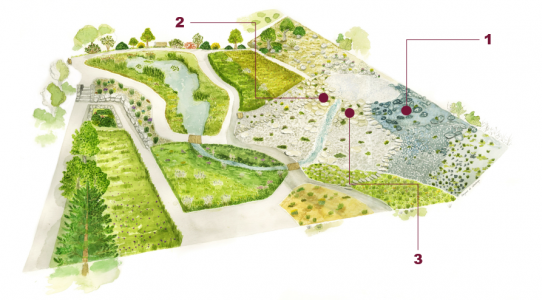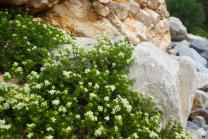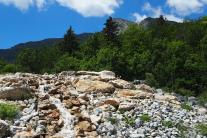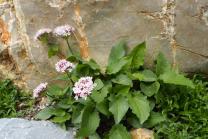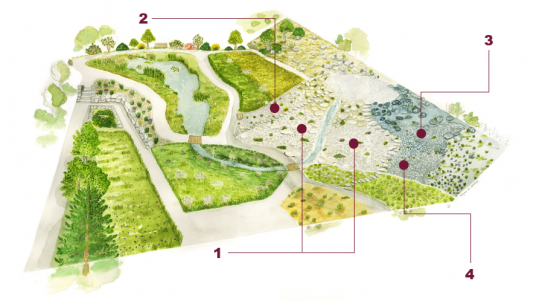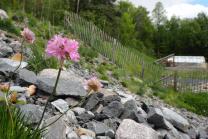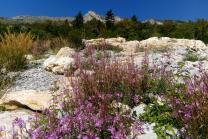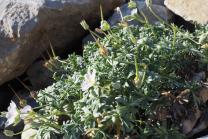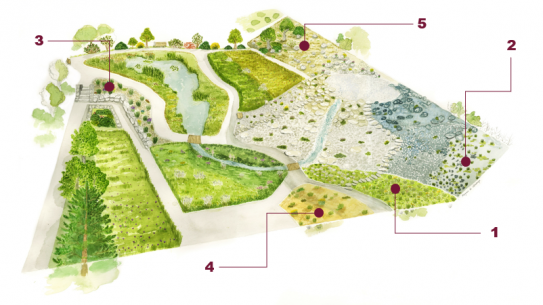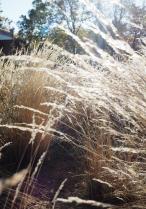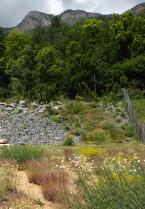From mineral to vegetal
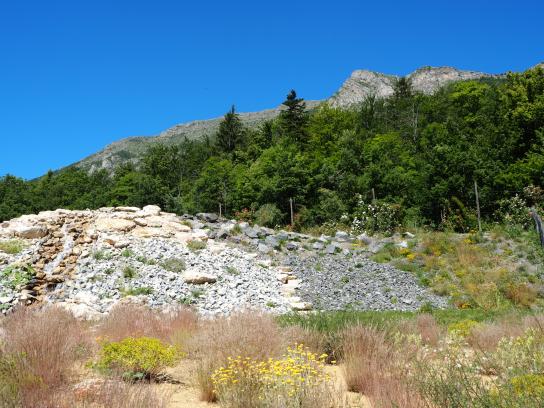
Rocks and faces - "Rochers"
In these environments the rupicolous or saxicolous plants thrive in contrasting conditions: sun and drought during summer, frost and wind during winter. Their roots deeply grip into the fissures where they draw water and nutrients. Water saving is essential for this specialized flora. That’s why these plants usually are rosette-shaped, cushion plants or have hairy or waxy, tightly interlocked leaves.
1 : Siliceous rocks
2 : Calcareous rocks from the montane to the alpine zone
3 : Calcareous rocks from the Mediterranean to the alpine zone
Scree slopes - "Eboulis"
The scree slopes are hillsides with loose rocks. The mobility of these slopes depends on the gradient and rate of erosion. The rocks lie on small grains that retain water and nutrients. The lithophyte species can stay on the surface whilst feeding from deep underground. Lithophyte foliage is fleshy and the roots can either be tough or brittle, allowing for growth with the movement of rocky material or vegetative propagation, respectively.
1 : Calcareous slope from the subalpine and the alpine zones
2 : Calcareous slope from the Mediterranean to the mountane zone
3 : Siliceous slope from the montane and the subalpine zones
4 : Siliceous slope from the subalpine and the alpine zones
Grasslands - "Pelouses"
This low vegetation is dominated by grass. Pasture or soil and climatic conditions keep this habitat open and treeless.
Many grasslands can be found in the Alps: Festuca varia grasslands on acid rocky soils at high altitude; Nardus stricta or Festuca violacea grasslands on the often snow-covered sloping ledges and fresh ground; dry Corynephorus canescens grasslands on the flat, sunny sands.
1 : Nardus strica grassland
2 : Festuca acuminata grassland
3 : Blue oat grass
4 : Corynephorus canescens grassland
5 : Central alpine arid grassland (Stipa capillata and Poa perconcinna)
